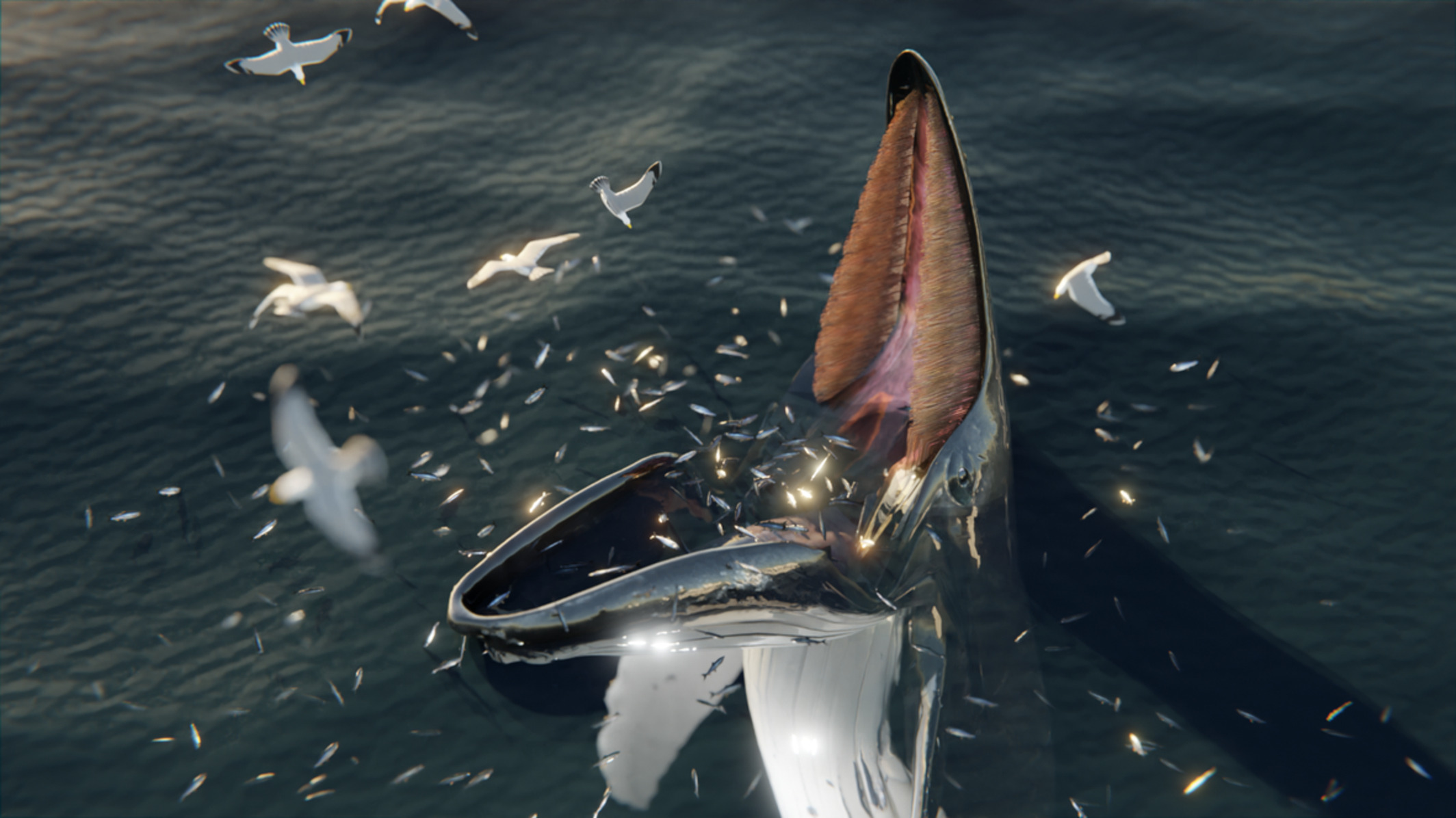
A digital recontruction of a humback whale trap feeding. Credit J. McCarthy
Monsters and weird creatures from ancient legends and old bestiaries often are not just pure figments of the imagination but tend to have their real prototypes. As it has recently transpired this is also true about the sea monster, referred to as hafgufa in Norse sagas and manuscripts. Nevertheless, its mystery has been unravelled only thanks to newly acquired knowledge.
The hafgufa is described in detail in King’s Mirror, a didactic text written in the 13th century for the Norwegian king Håkon Håkonsson. It is worth mentioning that a correlation has been found between 26 creatures described in this manuscript and marine animals recognized by modern science. Thanks to researchers John McCarthy, Erin Sebo and Matthew Firth the twenty-seventh one – hafgufa – has now been added to them.
In King’s Mirror the hafgufa is described as a huge fish looking rather like an island. For us the following passage is the most important from the entire description: “It is said of the nature of this fish that, when it goes to feed, it gives a great belch out of its throat, along with which comes a great deal of food. All sorts of nearby fish gather, both small and large, seeking there to acquire food and good sustenance. But the big fish keeps its mouth open for a time, no more or less wide than a large sound or fjord, and unknowing and unheeding, the fish rush in in their numbers. And when its belly and mouth are full, [the hafgufa] closes its mouth, thus catching and hiding inside it all the prey that had come seeking food.”
Another source, Örvar-Odds saga from the 14th century says that the opened mouth of the hafgufa on the water surface is so big, that it could be mistaken for two massive rocks rising from the sea, where a ship can sail in-between.
However, the hafgufa was not known only to Norsemen at the time of Middle Ages. Under the name Aspidochelone it also appears in the work Physiologus, which original Greek text was compiled in Alexandria between 150 – 200 AD. It states: “When it is hungry it opens its mouth and exhales a certain kind of good-smelling odor from its mouth, the smell of which, once the smaller fish have perceived it, they gather themselves in its mouth. But when his mouth is filled with diverse little fish, he suddenly closes his mouth and swallows them.”
Advance from distant history to the present. In 2011, a team of researchers observed near Vancouver Island a remarkable behaviour of humpback whales. They positioned themselves vertically in the water with only the tip of their snout and mandible protruding from the surface. Herrings began to gather in the “shelter” created in this way to be simply devoured by the humpback whales afterwards. At the same time, the effectiveness of this hunting method was further enhanced by them regurgitating a certain portion of the food, which attracted not only fish from a larger distance, which wanted to feed, but also marine birds, from which then the fish had a tendency to hide… This hunting method was named by the scientists as trap feeding. But beware: an almost identical behaviour was described at the same time from the other side of the globe, at Bryde’s whales, which hunted for anchovies in the same way. This time the method was named tread-water feeding.
The similarity between the behaviour of humpback and Bryde’s whales and the descriptions of the hafgufa is striking. Even the mentioning of the smell (though not good-smelling), which is created by releasing dimethyl sulfide from regurgitated zooplankton and small fish. But only the trio of McCarthy, Sebo and Firth managed to notice this similarity and explain it. However, at the same time, another very exciting question occurred: Why were the humpback and Bryde’s whales hunting in this way some one to two thousand years ago – and then began to use the same strategy only recently?

